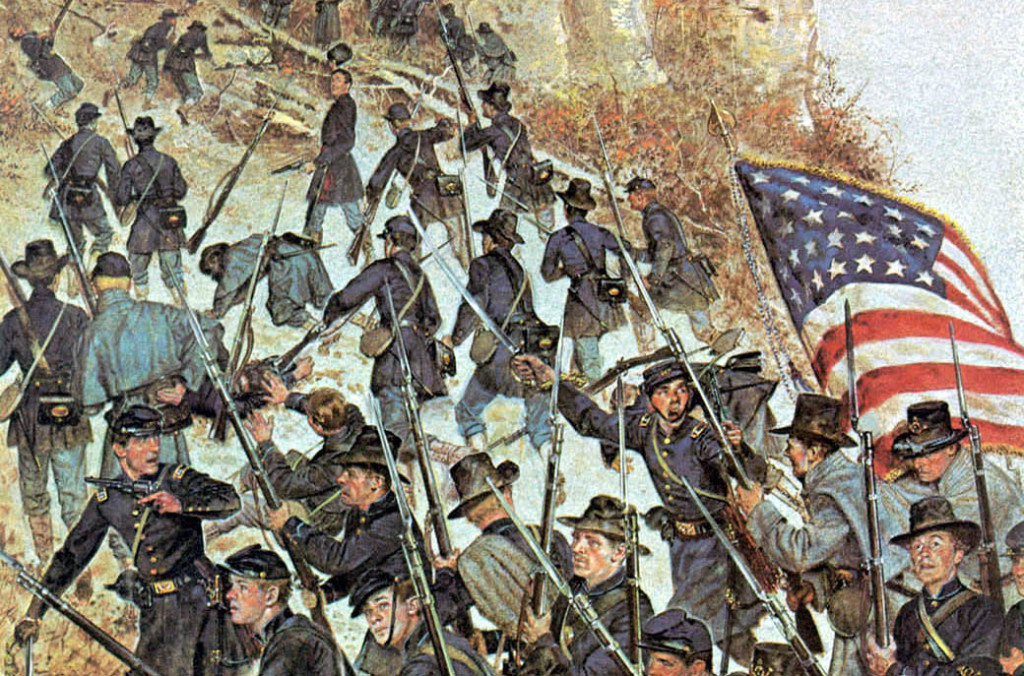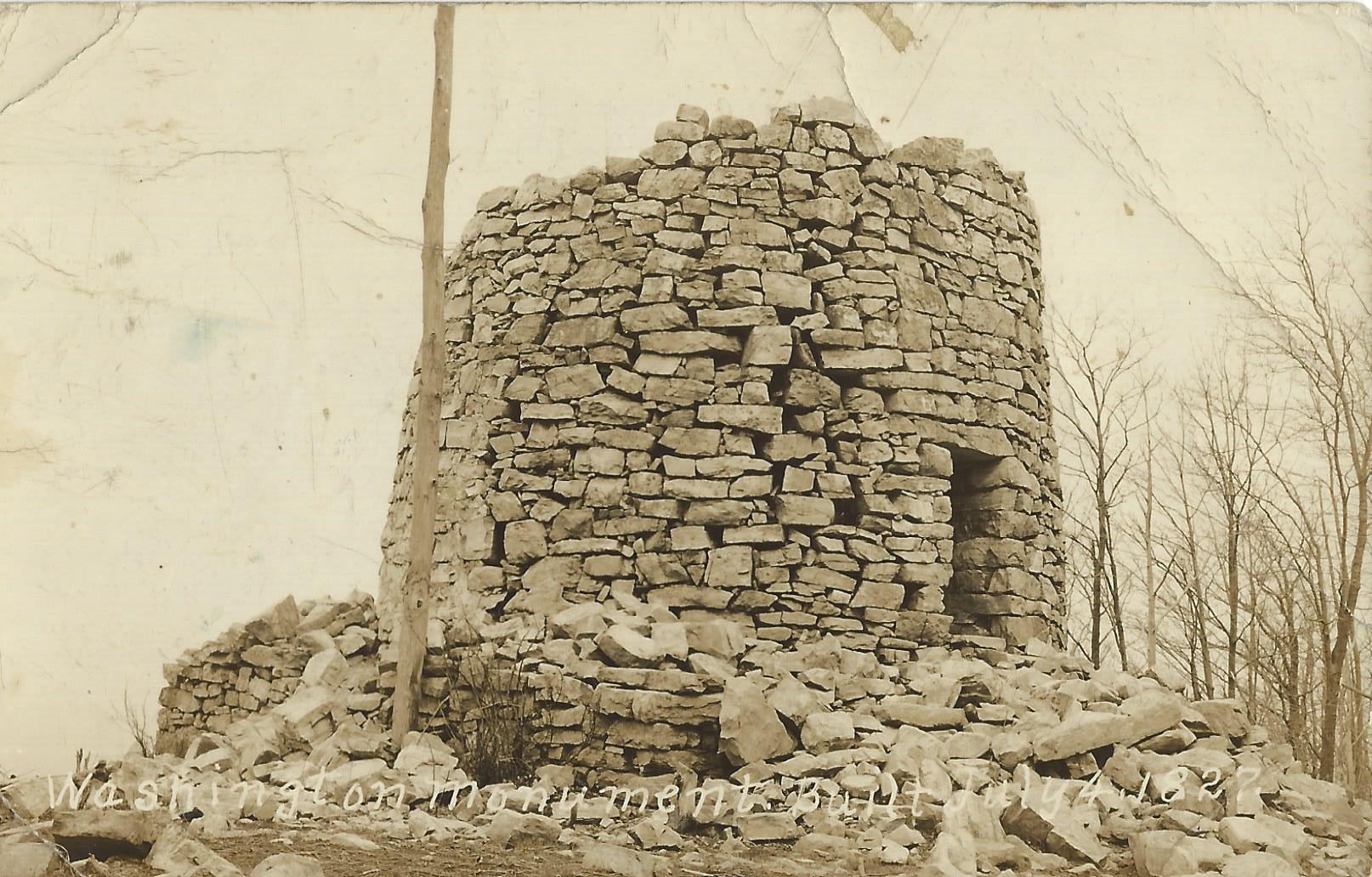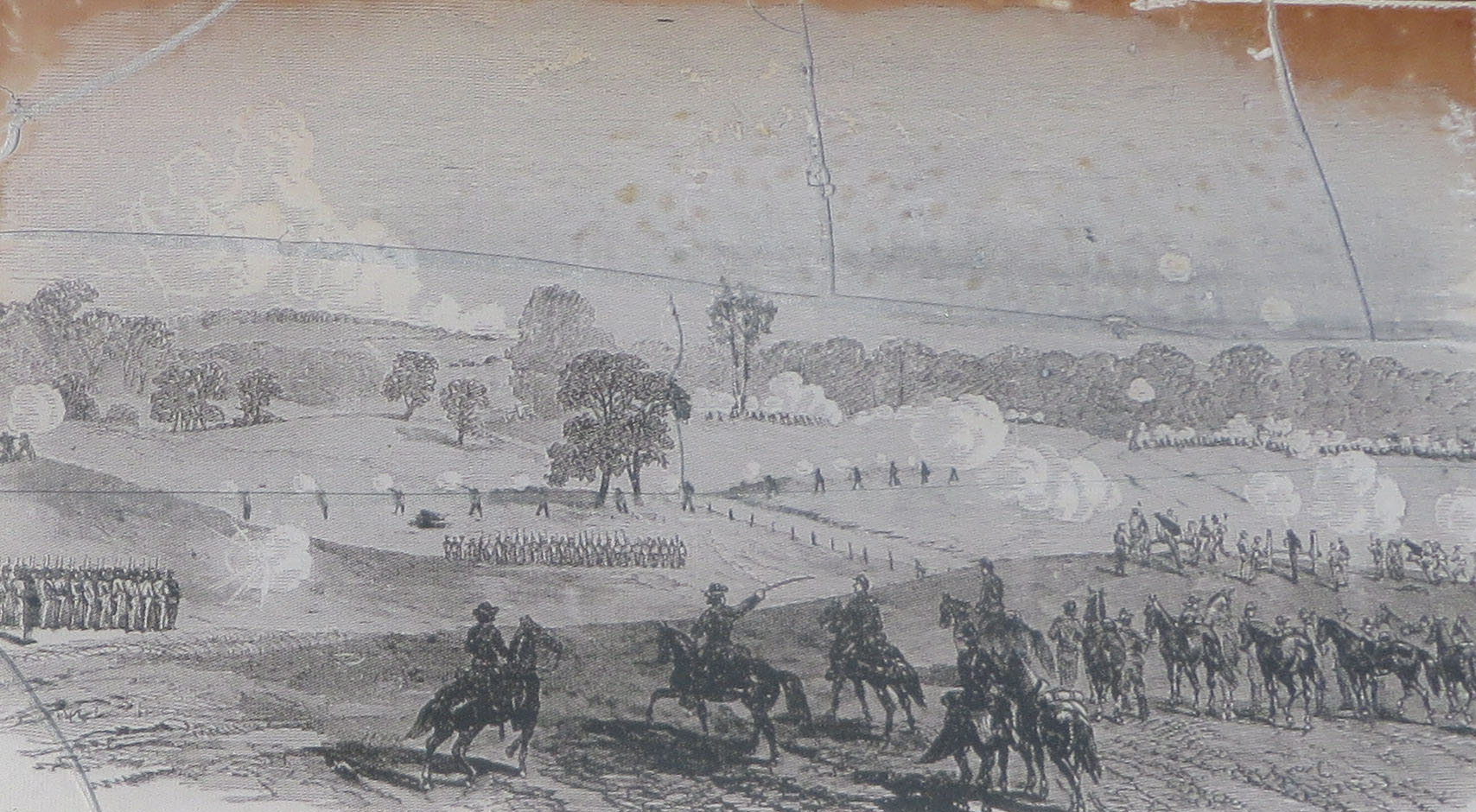The Civil War and Boonsboro
The little town of Boonsboro, nestled at the western foot of South Mountain, was the site of two Civil War battles. During the Civil War, Boonsboro’s churches and public buildings were used as makeshift hospitals for wounded soldiers.
Battle of South Mountain
September 14, 1862 – In this battle, Robert E. Lee’s opportunistic first invasion of the North was turned back at the gaps of South Mountain and preceded the famous and bloodiest battle of the Civil War, the Battle at Antietam. Soldiers were transported to Boonsboro throughout both the Battle of South Mountain and Antietam. The pass over South Mountain leads westward from Frederick through Boonsboro on to Hagerstown and is also referred to as Turner’s Gap. The home that is now the South Mountain Inn witnessed the battle as it played out in front of the house. The pass over the mountain became Route 40, the National Road. Below is an excerpt from www.civilwar.org describing the battle:
“After his success at Second Manassas, Gen. Robert E. Lee led the Army of Northern Virginia on an invasion of Maryland in September of 1862. Lee divided his army, sending a portion of it into western Maryland while Stonewall Jackson’s wing attempted to capture the Federal arsenal at Harper’s Ferry. The bold plan was jeopardized on September 13 when a mislaid copy of Lee’s orders revealing the Confederates’ plans and positions was given to Union commander Maj. Gen. George B. McClellan. Emboldened by this intelligence, McClellan tried to force his army through three passes in the South Mountain range on September 14, 1862. Intense fighting drew increasing number of troops of both armies to Fox’s, Turner’s, and Crampton’s gaps. Though the Federals ultimately gained control of all three passes, stubborn resistance on the part of the Southerners bought Lee precious time to begin the process of reuniting his army, and set the stage for the Battle of Antietam.”
The Washington Monument, the first monument constructed in honor of George Washington, sits atop South Mountain and was used as a signal station during the Battle of Antietam.
Battle of Boonsboro
July 8th, 1863 – From July 5 through the 14th, Confederate and Union troops sparred across Washington County during the retreat after the Battle at Gettysburg. They fought in
Funkstown, Hagerstown and here in Boonsboro, along the National Road. With five brigades advancing from Funkstown and Williamsport, Confederate General J.E.B. Stuart encountered Union resistance just outside of Boonsboro. Due to mud-soaked fields, fighting on horseback was impossible for the calvary, forcing them to dismount and fight like infantry. By mid-afternoon, the Union ran low on ammunition and was crumbling. When Union infantry arrived, Stuart withdrew to Funkstown, but he had gained another day for Lee’s retreating army.
Below is an excerpt describing the battle. Read the full account here.
“As Stuart approached Boonsboro, he ordered Captain William McGregor’s Battery, near the Williamsport Road, to fire upon the dismounted cavalry troops guarding the approach to Boonsboro. Union Lieutenant John Calef’s Battery A, 2nd U.S. Artillery quickly returned fire as he was positioned to the right on the National Road. Gunner George Neese of Chew’s Battery recalled “[The Union] promptly opened on us and returned our fire with a business like energy.” Counter battery fire commenced for several minutes reverberating off of South Mountain.”

Above: Scene of the battle today, farm fields in the shadow of South Mountain.

Above: Painting, The American Soldier, 1862 (The Battle of South Mountain)


Above: July 8, 1863, the cavalry of both sides fought dismounted at times (C.E.H. Bonwill, artist; Frank Leslie’s Illustrated Newspaper, August 8, 1863; courtesy of Princeton University Library)
